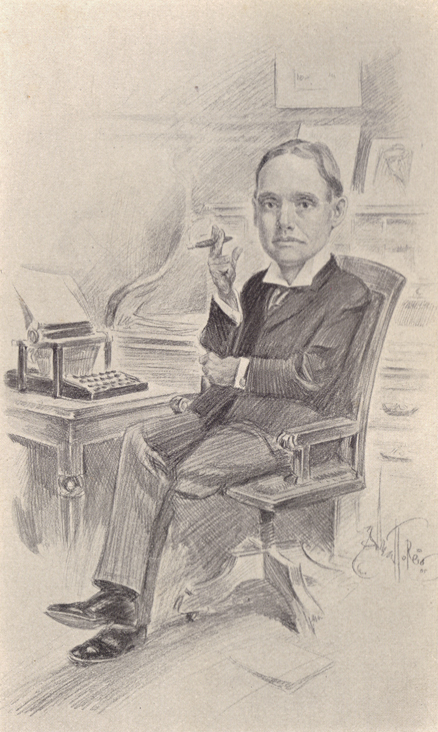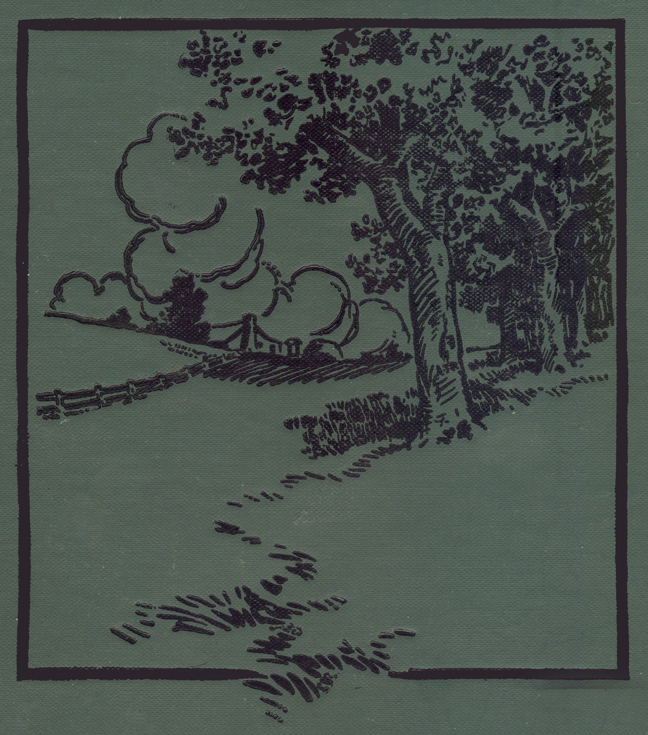
From At the Grass Roots, Comprising “The Christmas of 1883,” and Other Vagrant Sketches, by Elmer House (Dodd Gaston), with Cover Design and Frontispiece by Albert T. Reid, Topeka: Monotyped by Crane & Company, 1905; pp. 41-45.

THE NEIGHBORHOOD’S GAYER SIDE.
Society in our neighborhood was divided into two factions — those who danced and those who didn’t. The dancing faction was the larger, but the anti-dancing folk evened things up by claiming to be a great deal better than the dancing crowd. As a sort of antidote for the dancing germ, the anti-dancing crowd indulged in a form of diversion known locally as the “play party.” One needed no invitation to attend a dance. All that was required of him was a deposit of 25 cents, in return for which he received a number, written usually in lead-pencil upon a fragmentary portion of a pasteboard box, and tacit permission to dance whenever his turn came. But it wasn’t considered polite to go to a “play party” unless one had an invitation.
The dancing parties were conducted on strict business principles. If no supper 42 were served the dancer was assessed 25 cents. If supper had been provided he paid 50 cents, although it was optional with him whether he took supper. Sometimes, if the dance was very swell and the supper more than usually elaborate, the prices were doubled. At that time the two-step had not been invented and they were still dancing the polka and the schottische, but mostly the dances were quadrilles, a waltz or schottische being thrown in every fourth or fifth dance.
As has been noted, attendance on “play parties” was by invitation only. If one were lucky at a “play party” it fell to his good fortune to kiss every girl present sometime during the evening. The “play party” was devoted to the playing of games and the paying of forfeits. One of the games was “Miller Boy,” in which several couples marched in a circle with a lone lad as its center, singing a mournful ditty about a miller boy who took his toll with a free good-will, 43 and who at the same time kept one hand in the hopper and the other in the sack. At a signal the marchers changed partners, and the lad in the center made effort to forcibly separate some other lad from his girl. If he were successful the lad bereft of a marching companion paid a forfeit and took his turn as the hub around which the spokes of the wheel revolved. It was a wildly exciting form of entertainment.
There were several dozens of these games — “Old Dan Tucker,” “Weevilly Wheat,” “Fruit Basket,” “Tin Tin,” and others, — but as they were all, like “Miller Boy,” founded on kissing the girls later on in the evening, they need not be reviewed at length. When forfeits had been imposed upon everybody present, they were sold by an extempore auctioneer over the head of one of the participants. This participant named the price which the owner had to pay to again secure possession of his property, 44 but as forfeits were always redeemed by kissing some person of the opposite sex, the price was never considered prohibitive.
Perhaps the most popular plan for redeeming forfeits was the game called “Postoffice.” In “Postoffice” the person bent on retrieving his property from the hands of the trustee of forfeits went into an adjoining room and sent word to some girl, usually his sweetheart, that a letter awaited her. “Postoffice” was really the ideal form for liquidating one’s osculatory obligations, because he was not compelled to wipe out the debt in full view of a jeering audience, and he could pay as much interest as the girl would stand for. Building a “Telegraph Line” and “Picking the Cherries” also had a strong following among those staggering under the burden of debt, for in each of these popular divertisements every lad kissed two girls and every girl was kissed by two young men.
45 This country isn’t what it used to be. Once cannot kiss a young woman now unless he happens to be engaged to her, and the cost of dancing has advanced 600 per cent.
